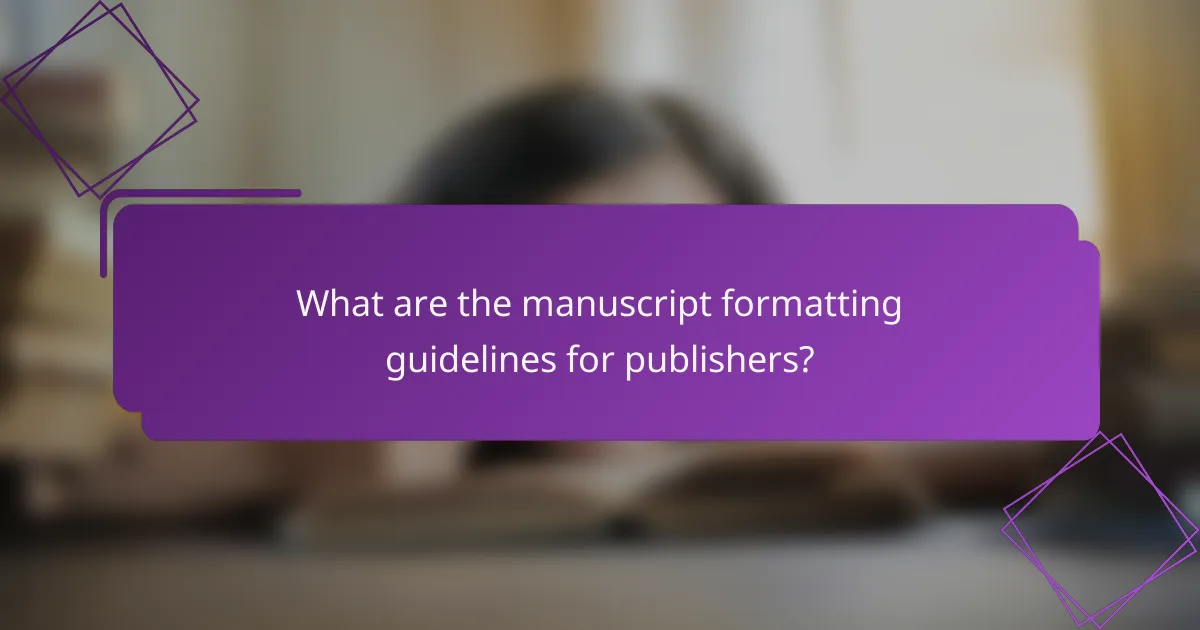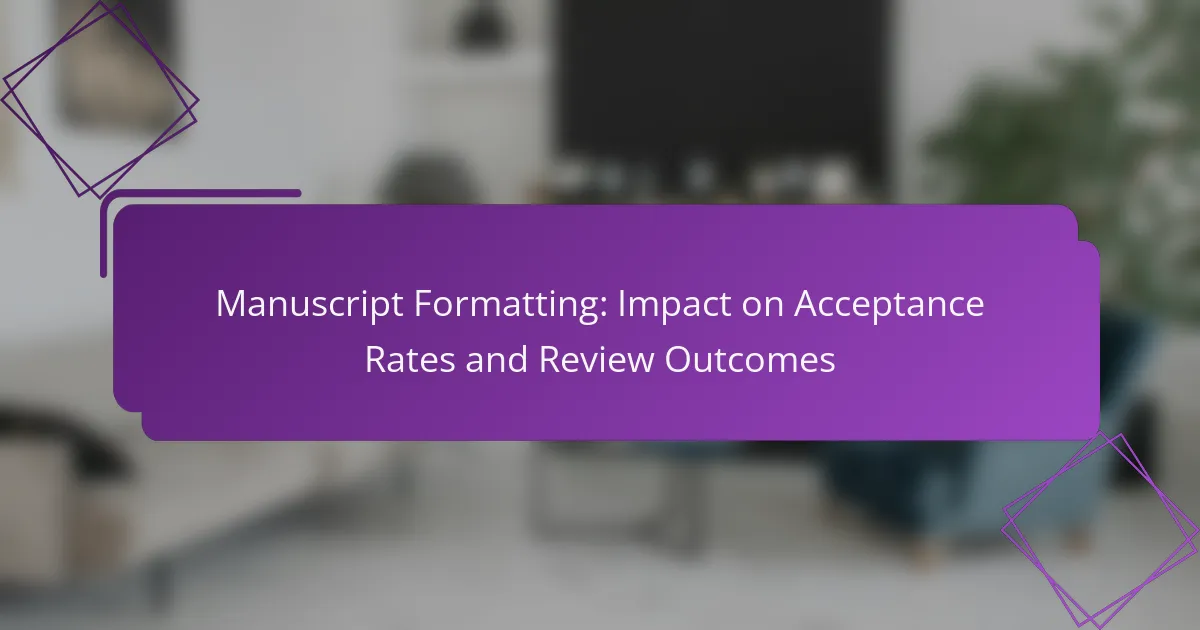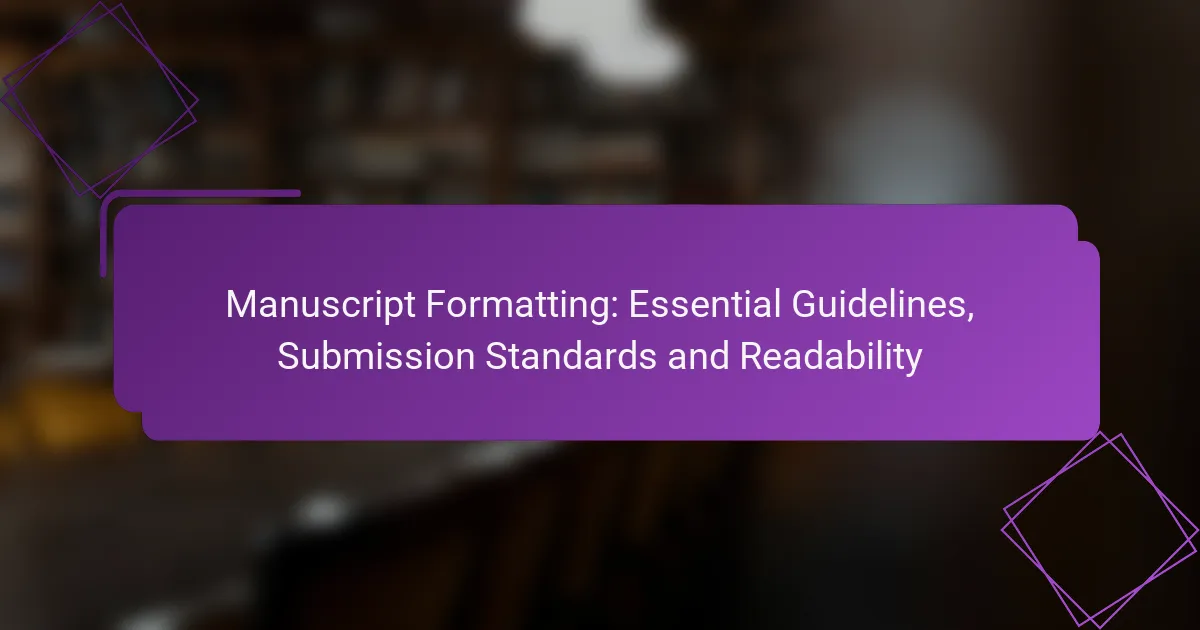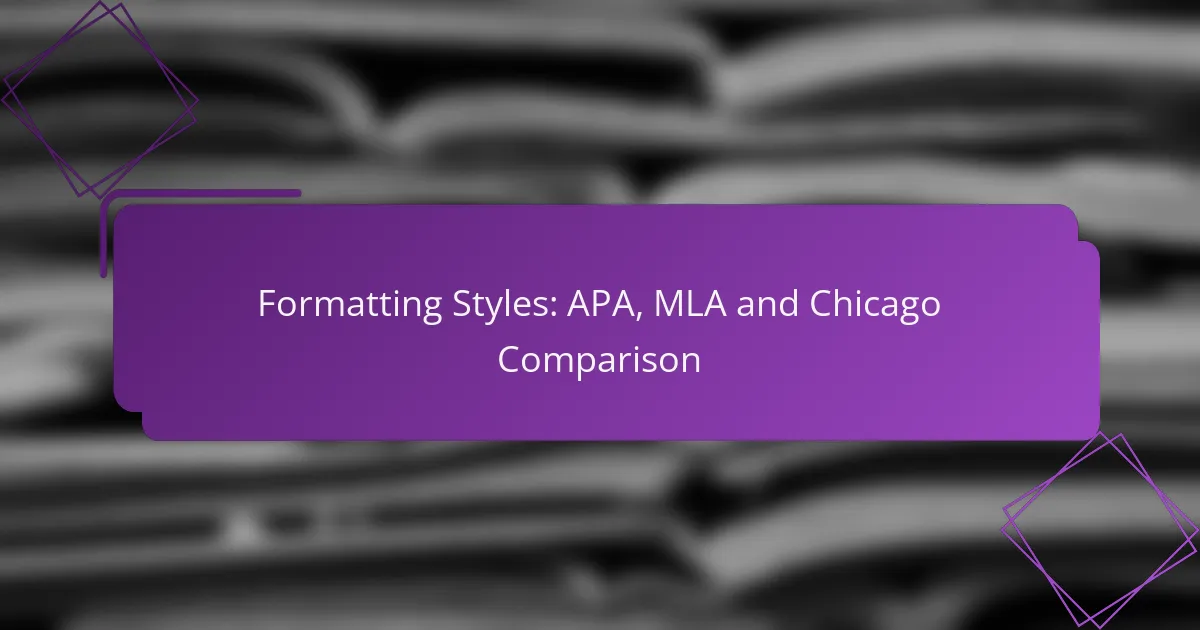Effective manuscript formatting is essential for enhancing readability and ensuring clarity in your writing. By prioritizing visual appeal and consistency, you can create a professional presentation that engages readers and facilitates comprehension. Clear definitions, concise language, and a well-structured layout further contribute to making your work accessible to a wider audience.

How to format a manuscript for readability?
To format a manuscript for readability, focus on clarity, consistency, and visual appeal. Proper formatting enhances comprehension and keeps readers engaged, making your work more accessible and professional.
Use clear font types
Selecting a clear font type is crucial for readability. Common choices include serif fonts like Times New Roman or sans-serif fonts like Arial, which are easy on the eyes. Aim for a font size between 11 and 12 points for the main text to ensure legibility.
Avoid decorative fonts that may distract or confuse readers. Stick to standard fonts that are widely accepted in academic and professional settings to maintain a formal tone.
Maintain consistent spacing
Consistent spacing throughout your manuscript improves readability significantly. Use 1.5 or double line spacing for the body text, which allows readers to easily follow along without feeling cramped.
Additionally, ensure uniform margins—typically around 1 inch on all sides. This creates a balanced look and provides space for annotations or notes if necessary.
Implement effective headings
Effective headings guide readers through your manuscript and highlight key sections. Use a clear hierarchy with distinct styles for main headings, subheadings, and sub-subheadings to create a logical flow.
Consider using bold or larger font sizes for main headings, while keeping subheadings slightly smaller but still prominent. This visual distinction aids in navigation and helps readers locate information quickly.
Utilize bullet points for clarity
Bullet points can enhance clarity by breaking down complex information into digestible pieces. Use them to list key points, steps, or features succinctly, making it easier for readers to grasp essential details at a glance.
Limit bullet points to one idea per line and keep them concise—ideally, no more than two lines each. This approach prevents overwhelming the reader and maintains focus on the main message.

What are the best practices for manuscript clarity?
To enhance manuscript clarity, focus on defining key terms, using concise language, and avoiding jargon. These practices ensure that your writing is easily understood by a broad audience, improving overall readability.
Define key terms clearly
Clearly defining key terms is essential for ensuring that readers understand your manuscript’s main concepts. Use straightforward language and provide definitions upfront, especially for specialized terminology. This approach prevents confusion and sets a solid foundation for your arguments.
Consider including a glossary if your manuscript contains numerous technical terms. This can serve as a quick reference for readers, enhancing their comprehension and engagement with your work.
Use concise language
Concise language improves clarity by eliminating unnecessary words and phrases. Aim for brevity while maintaining the essence of your message; this helps keep readers focused on your main points. A good rule of thumb is to limit sentences to 15-20 words when possible.
Review your writing for redundancies and remove filler words. For example, instead of saying “due to the fact that,” simply use “because.” This small change can significantly enhance readability.
Avoid jargon and complex sentences
Avoiding jargon and overly complex sentences is crucial for making your manuscript accessible. Use plain language that can be understood by a general audience, unless your target readers are specialists in a specific field. In that case, ensure that any necessary jargon is well-defined.
Break long sentences into shorter ones to improve clarity. Aiming for an average sentence length of 10-15 words can help maintain reader engagement. Additionally, consider using bullet points for lists or complex ideas to make them easier to digest.

How does presentation affect manuscript quality?
The presentation of a manuscript significantly influences its perceived quality and readability. A well-structured layout, appealing cover design, and effective use of illustrations can enhance clarity and engage readers more effectively.
Impact of visual layout
A clear visual layout is crucial for guiding readers through the manuscript. Use consistent fonts, appropriate spacing, and logical headings to create a flow that is easy to follow. Aim for a font size between 11 and 12 points for body text, with larger sizes for headings.
Consider using bullet points or numbered lists to break down complex information. This not only improves readability but also allows readers to quickly grasp key points without wading through dense paragraphs.
Importance of cover design
The cover design serves as the first impression of your manuscript, making it essential for attracting potential readers. A professional and visually appealing cover can convey the content’s quality and relevance. Use high-quality images and a cohesive color scheme that reflects the manuscript’s theme.
Ensure that the title and author name are prominently displayed and easy to read. A good rule of thumb is to keep the title font size significantly larger than other text elements, making it stand out on bookshelves or online listings.
Role of illustrations and tables
Illustrations and tables can significantly enhance the manuscript’s clarity by providing visual representations of complex data or concepts. Use charts to summarize findings or tables to compare information succinctly. This can help readers understand and retain information more effectively.
When incorporating visuals, ensure they are relevant and well-labeled. Each illustration or table should have a clear title and a brief description to explain its significance within the context of the manuscript.

What tools assist in manuscript formatting?
Several tools can enhance manuscript formatting, ensuring readability and clarity. Popular options include Microsoft Word, LaTeX, and Scrivener, each catering to different needs and preferences.
Microsoft Word formatting features
Microsoft Word offers a range of formatting features that simplify the manuscript preparation process. Users can easily adjust font styles, sizes, and spacing, which helps maintain consistency throughout the document.
Utilizing styles for headings and paragraphs not only improves readability but also facilitates the creation of a table of contents. Additionally, features like track changes and comments are invaluable for collaborative editing, allowing authors to manage feedback efficiently.
LaTeX for technical documents
LaTeX is a powerful typesetting system ideal for technical and scientific documents. It excels in handling complex formatting, such as equations, tables, and bibliographies, making it a preferred choice for researchers and academics.
While LaTeX has a steeper learning curve compared to word processors, its output quality is often superior. Users can create professional-looking documents with precise control over layout and formatting, which is crucial for publications in scientific journals.
Scrivener for organization
Scrivener is a writing software designed to help authors organize their manuscripts effectively. It allows users to break their work into manageable sections, making it easier to navigate and edit large documents.
With features like corkboard view and outlining tools, Scrivener helps writers visualize their projects. This organizational capability is particularly beneficial for long-form writing, such as novels or research papers, where maintaining coherence and structure is essential.

What are the manuscript formatting guidelines for publishers?
Manuscript formatting guidelines for publishers are essential rules that ensure clarity and consistency in submitted works. Adhering to these guidelines can significantly enhance the readability and presentation of your manuscript, making it more appealing to editors and reviewers.
Publisher-specific requirements
Each publisher may have unique formatting requirements that authors must follow. These can include specific font types, sizes, line spacing, and margin settings. For instance, some publishers may require Times New Roman 12-point font with double spacing, while others might prefer Arial 11-point with single spacing.
It is crucial to check the publisher’s website or submission guidelines for detailed specifications. Ignoring these requirements can lead to delays in the review process or outright rejection of your manuscript.
Common formatting standards
Despite variations among publishers, several common formatting standards exist that most authors should consider. Typically, manuscripts should include a title page, abstract, main body, and references. The title page often contains the title, author names, affiliations, and contact information.
Additionally, using consistent heading styles, numbered sections, and clear paragraph indentation can improve overall readability. Authors should also ensure that figures and tables are labeled correctly and referenced in the text.
Submission guidelines overview
Submission guidelines generally outline the process for submitting a manuscript, including the required format and any necessary documentation. Authors should prepare a cover letter, which may include a brief summary of the manuscript and its significance.
Many publishers now use online submission systems, so authors should familiarize themselves with these platforms. It’s essential to follow the step-by-step instructions provided during the submission process to avoid complications.

How to choose the right manuscript format?
Selecting the appropriate manuscript format is crucial for ensuring readability and clarity. Consider the guidelines of your target publisher or journal, as they often have specific requirements that can affect your submission’s success.
Understand the guidelines
Before formatting your manuscript, thoroughly review the submission guidelines provided by the publisher or journal. These guidelines typically outline preferred font types, sizes, margins, and citation styles. Adhering to these specifications can enhance your manuscript’s chances of acceptance.
Common formats include APA, MLA, and Chicago, each serving different academic disciplines. Familiarize yourself with the nuances of the required style to ensure compliance.
Focus on readability
Readability is essential for engaging your audience. Use a clear font like Times New Roman or Arial, typically in 12-point size, and maintain consistent line spacing, usually 1.5 or double-spaced. This layout helps readers navigate your text easily.
Break up large blocks of text with headings and subheadings to create visual breaks. Use bullet points or numbered lists for key information, as they can enhance comprehension and retention.
Maintain clarity and presentation
Clarity in your manuscript’s presentation is vital. Use headings to structure your content logically, making it easier for readers to follow your arguments. Ensure that your figures and tables are labeled clearly and referenced appropriately within the text.
Consider including a table of contents for longer manuscripts to guide readers. Additionally, proofread your work multiple times to eliminate errors that could distract from your message.



